Comparing Beljaars' method with CFD
Comparing
Beljaars' method with CFD by Victor Reijs
is licensed under CC BY-NC-SA 4.0



This is work in progress!!!
Introductie
A comparison between Beljaars' method and CDF will be made on this
webpage.
Er zijn nog wat andere voorbeelden of CFD simulaties: Nageli's fence, Tree characteristics,
De Hoop (Den
Oever), Makkinga's
Mölle
(voorheen Den Oord, Ommen), De Zwiepse Molen (Zwiep) en Impington Mill
(Impington).
Deze webpagina heeft de volgende paragrafen:
Sorry for the two langauges gebruikt in deze webpagina!
Vette paarse tekst heeft nog extra
aandacht nodig.
Informatie over de omgeving
- The ABL wind speed is logarithmic. Different z0
will be used. Height of the obstacle is 2.2m and has a
aerodynamic porosity of 8.5%. The velocity at 2.2m is 5m/sec.
| z0
|
H/z0
|
u@10m
[m/sec]
|
0.11
|
20
|
7.42
|
0.0328
|
67
|
6.78
|
0.0132
|
167
|
6.47
|
0.066
|
333
|
6.3
|
- CFD wordt gedaan voor wind uit Zuid (180deg).
Eigenschappen van obstakel
- One box (fence) of 25m (Nägeli's fence) long, 40cm thick ad
2.2m heigh
- Nägeli fence, has an optical porosity of 20%; aerodynamic
porosity 8.5% [Nägeli, 1953, Bild 2].
- 3D model of Nägeli's fence in SketchUp:
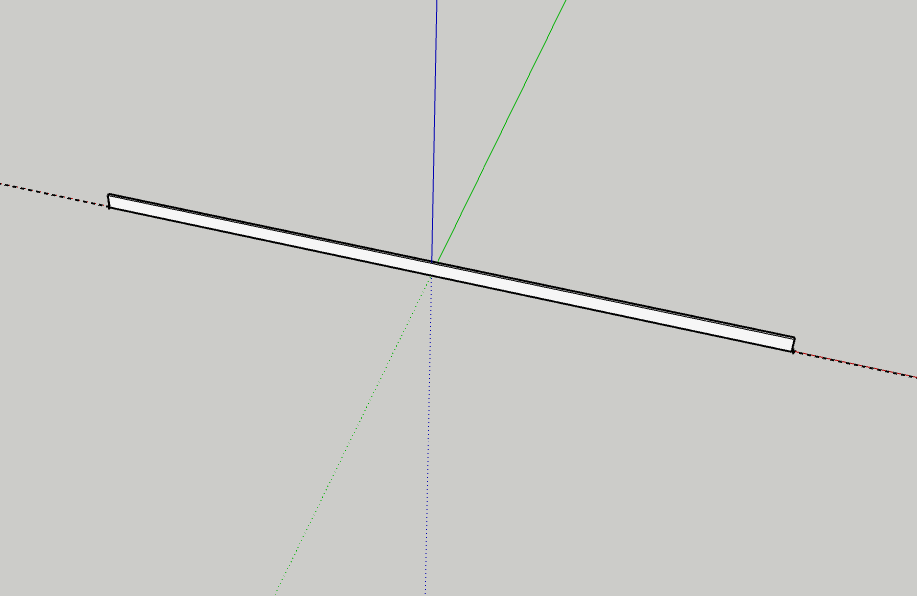
- Include at the back (250m) a small (dummy) box (which is
needed for being able to simulate things in CFD)
- Sluit af als klaar: 'Save' en 'Download' -> 'STL'
- Effort: 0.5 hours.
Editing 3D-model in SIMSCALE
We are making use of SIMSCALE. Make sure
you make a Community Plan
account. This Community Plan allows only for 10 simulations (but
one can do many more; but with more manual work). Anyway make
sure you have a good CAD-model and that you train/educate yourself around SIMSCALE.
The following steps can be done:
- Het simulatie project staat hier.
- Import het STL
model
- Edit this (not yet rotated) model by: Edit a copy
- Make a Flow Volume -> External waarbij de
poreuze objecten (bomen: 'Excluded parts') niet deelnemen aan
het 'External flow volume'.
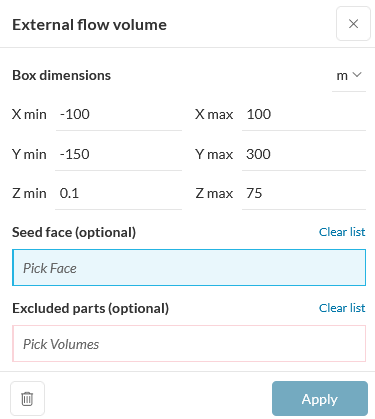
Zie voor richtlijnen mbt vrije afstanden rondom het model hier [Franke,
2007]:
- Xmin, Xmax: minimaal 5*hoogte/grootte hoogste
obstakel [Franke, 2007, page 17] extra aan linker en rechter
kant van 3D-model. In dit geval ~5*~20m (molen): ~ 150m
- Ymin: Distance in front of model (in Y-direction)
minimaal 8*hoogte/grootte hoogste obstakel [Franke, 2007,
page 18] extra aan voorkant van 3D-model. In dit geval
~8*~20m (molen): ~ 150m
- Ymax: Distance at back of model (in Y-direction)
minimaal 15*hoogte/grootte hoogste obstakel [Franke, 2007,
page 18] extra aan achterkant van 3D-model. In dit geval
~15*~20m (molen): ~ 300m
- Zmin: Ground (in Z-direction) minimaal om invloed
van modelerings afrondingen te voorkomen: ~ 0.1m
- Zmax: Height (in Z-direction) minimaal
6*hoogte/grootte hoogste obstakel [Franke, 2007, page 17].
In dit geval ~6*~20m (molen): ~ 150m
- By the way, the default values in SIMSCALE were always
somewhat larger than the above, so its defaults are also ok.
Except for Zmin; I would put that always at 0.1m.
- Delete the dummy box, maar niet de fence
- Save
- Effort: 0.5 hours.
Configureren van de CFD
Take the following steps (if not default, it is explicitly
mentioned in below steps):
<the screen grabs are not fully
matching the text: the text is leading>
- Goto SIMULATIONS +
- Incompressible -> Turbulence-model -> Realizable
k-epsilon [Franke, 2007, page 14]
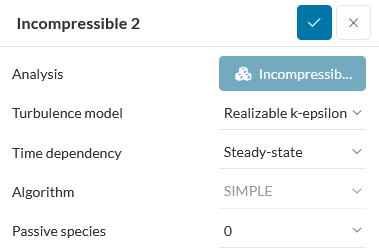
- Materials -> Air -> Apply
Assigned Volumes -> Flow region
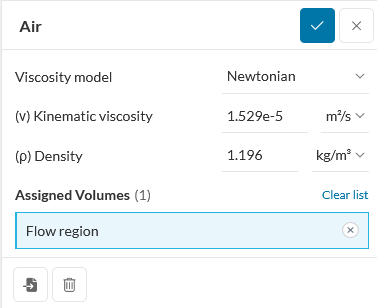
- Boundary conditions
- Velocity Inlet
Assigned Faces -> the wind side
(U) Velocity -> Uy -> ABL Formula
(7.42m/sec at 10m and z0=0.0132m, the wind
direction is 180deg [S])
(0.41*7.42/log((10+0.0132)/0.0132))/0.41*log((z+0.0132)/0.0132)
Turbulence -> Fixed value
(k) Turb. kinetic energy -> ABL derived Formula
((0.41*7.42)/(log((10+0.0132)/(0.0132)))^2/(0.09)^0.5)
(ε) Dissipation rate -> ABL derived Formula
(0.41*7.42/log((10+0.0132)/0.0132))^3/(0.41)/(z+0.0132)
Save
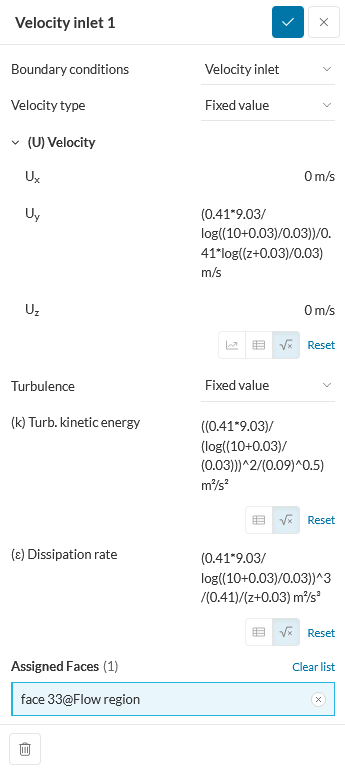
- Pressure outlet
Assigned Faces -> opposite inlet side
Save
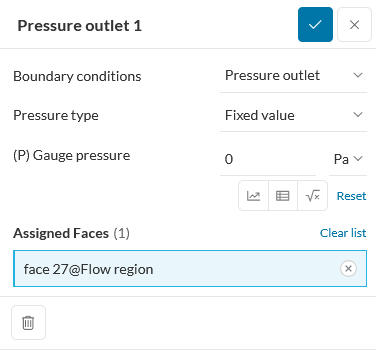
- Wall
Assigned Faces -> two sides and top
(U) Velocity -> Slip
Save
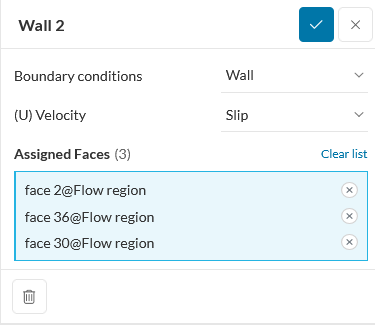
- Custom (ground)
Assigned Faces -> bottom side
Wall roughness -> On
Roughness height ->
1m
Roughness constant -> 0.5
Save
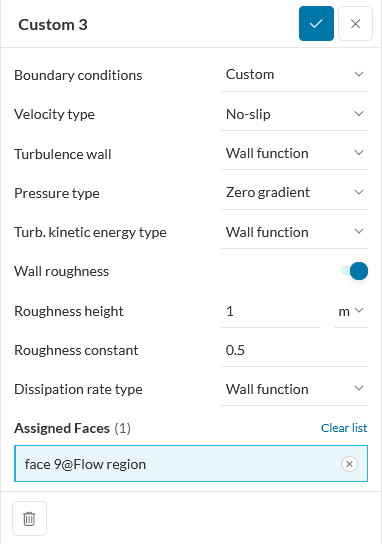
- Mesh
25m fence: Fineness = 7.5
(1.5Mcells)
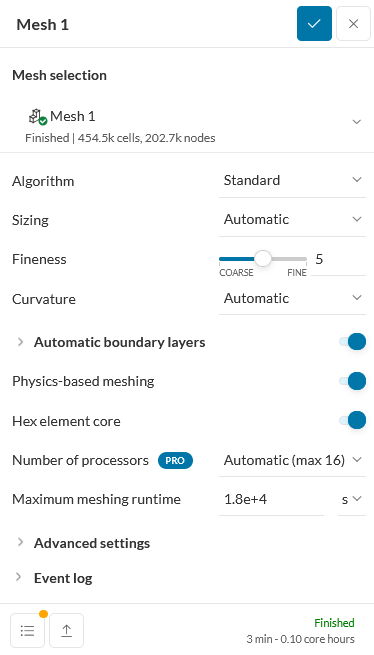
- Mesh -> Refinements -> Inflate boundary layer
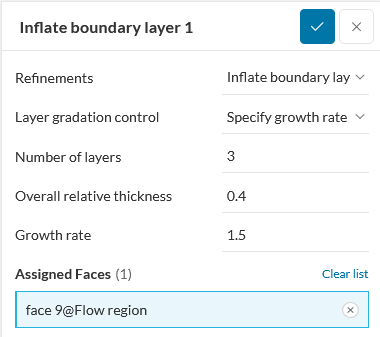
- Advanced concepts -> Porous media -> Perforated plate
An optical porosity of 20%; this gives 8.5% for aerodynamic
porosity.
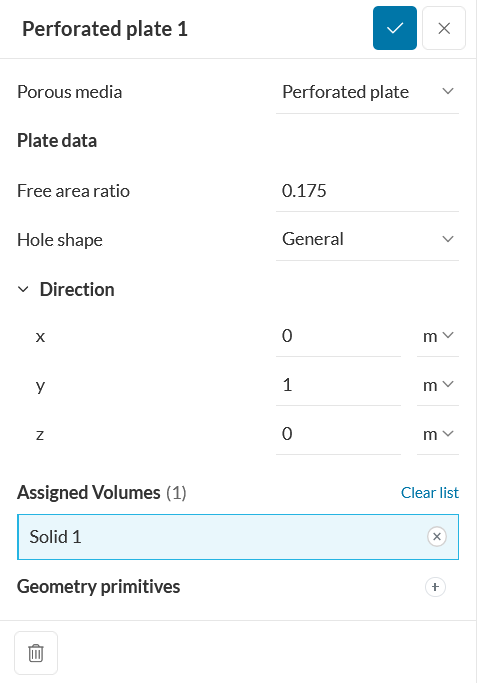
- Effort: 2 hours.
Uitvoering van de CFD
- For this simulation it is handy that one can Download the
results (so at least a fully functioning Community Plan). By
downloading the velocity results it is easy to compare these
with Tabel 4.5 to 4.8 and Figure 5.1 [Beljaars, 1979].
- Simulation Runs +
- Mesh size: Fineness of 7.5 has been used in below
analysis.
- Below is a graph of the relative speed [%]. For height from 0
to 7.5m and distance from -25m (so not -50m as stated in
picture!) to ~41m. WIth aerodynamic porosity of 8.5% (Dichte
Wand)

- Below is a graph of the relative speed [%] as simulated in CFD
(continuous curves) and Beljaars (dashed curves, Tabel 4.5). For
distance (x/H) from 22m (10H) to 176m (80H). And at 5 heights
(z/H: 0.5H, H, 2H and 3H). WIth aerodynamic porosity of 8.5% (Dichte
Wand)
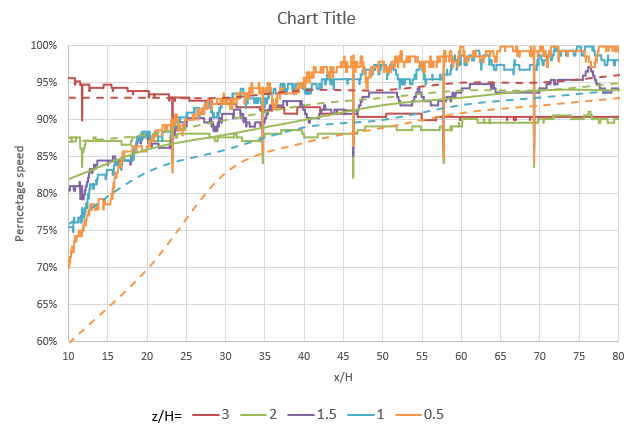
This is slightly different behavior then seen in Beljaars
(dashed curves, Tabel 4.5). All heights should (according to
Townsend) go towards more or less the same percentage (94%).
This migth be due to the Roughness height of ground
boundarylayer in the CDF, which might influence the velocity for
the long distances (x/H). Furthermore height 0.5H is quite
different.
Remark: changing this Roughness
height gives no change in the CFD... What to do?
The z/H=0.5 curve (orange dashed) of Beljaars is
quite different from CFD (orange conitnous curve). This could be
because Townsend's z/H=0.5 curve (used as verification of in
Beljaars) is also quite different from Nägeli (which maps on the
CFD). See for difference Townsend and Nägeli here.
- More to come for other z0 and more aerodynamic
porosities.
- Effort: 4 hours.
Conclusions
- Most default values of SIMSCALE look ok, except:
- Use Realizable k-epsilon
- Zmin should be always 0.1m
- The higher the Fineness the better, somewhere
between 7.5 and 9 (instead of default of 5), or better: use
your own mesh configuration.
- More to be added when more data analysis is done (for other z0).
- It is clear that Beljaars used Nägeli to optimise Townsend's
model. Nägeli's fence was porous. So Beljaars' guidelines are
also mainly looking at porous obstacles.
References
Beljaars, A.C.M.: Windbelemmering rond
windmolens. In: (1979).
Franke, Jörg et al. COST Action 732: Best
practice guideline for the CFD simulation of flows in the urban
environment. Brussels, COST Office 2007.
Acknowledgements
I would like to thank people, such as
and others for their help, encouragement and/or constructive
feedback. Any remaining errors in methodology or results are my
responsibility of course!!! If you want to provide constructive
feedback, please let me
know.
Major content related
changes: November, 6, 2024












